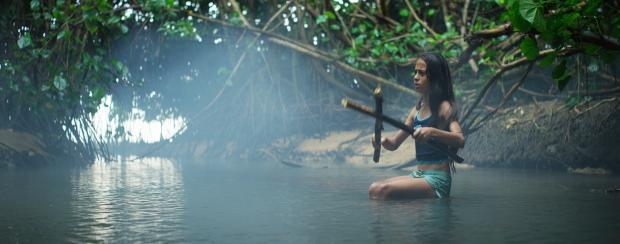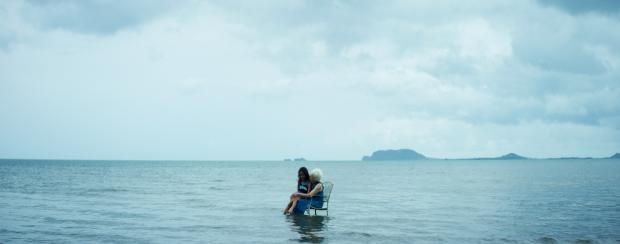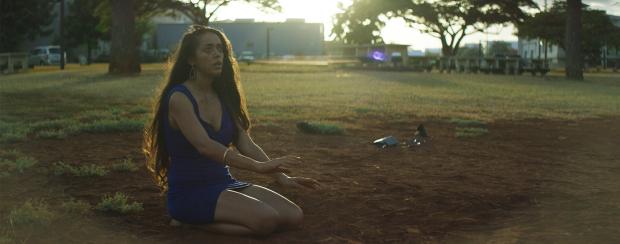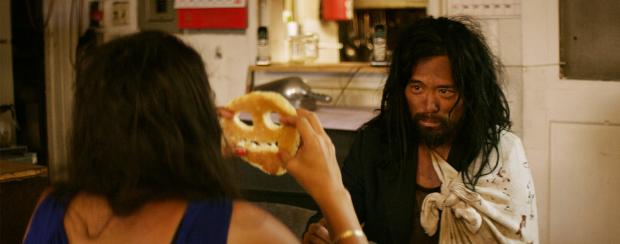America is currently experiencing a historic surge of protests igniting a cultural awakening and racial reckoning. As what has been called “Columbus Day” arrives, shorts, documentaries and features by and about the indigenous peoples of the Pacific Islands are being given their day in the sun as part of the 36th annual Los Angeles Asian Pacific Film Festival (https://festival.vcmedia.org/2020/). Since 1983 Visual Communications, a nonprofit organization, has presented LAAPFF, dedicated to its mission “to develop and support the voices of Asian American and Pacific Islander filmmakers and media artists who empower communities and challenge perspectives.” This year due to the pandemic the Festival is online.
To be sure, the plethora of pictures presented at LAAPFF are by Asian and Asian-American filmmakers with roots in countries such as the People’s Republic of China, India, etc., with populations that vastly outnumber the peoples of Polynesia, Melanesia and Micronesia. Nevertheless, LAAPFF provides a perch for works by and about Oceanic talents and topics in Los Angeles, a global capital of cinema. This is the first in a series of reviews of selections from Hawaii, the Marquesas, Samoa, Aotearoa/New Zealand, etc., at LAAPFF, which is taking place through October 31.
WAIKIKI, Mon Amour
New Fiction Film Goes Beyond South Seas Cinema’s Celluloid Stereotypes
Writer/director Christopher Kahunanana’s feature film debut Waikiki is a sensitively nuanced peek behind the paradise façade paraded before tourists to lure them to come visit Hawaii. Danielle Zalopany depicts Kea, a “local girl” on the skids at Oahu. When the feature opens Kea is performing with a troupe of hula dancers at a nightclub for tourists with a backdrop of world-famous Diamond Head. The beautiful young Polynesian is alluringly clad in a halter top, sarong and what are probably plastic leis and flowery crown. They dance to the lovely sonorous song (probably recorded) “Waikiki” by Andy Cummings that extolls the idyllic vision of a bygone era before the center of Hawaii’s tourism was turned into a high rise hell squeezing dollars out of visitors drawn to Oahu by a heavenly vision:
“Waikīkī
My whole life is empty without you
I miss that magic about you
Magic beside the sea
Magic of Waikīkī.”
Despite the fact that Kea has two other part-time jobs – as a Hawaiian language teacher for children (probably as part of the Aloha State’s laudatory program to teach the indigenous mother tongue, which has largely vanished from daily discourse due to colonial subjugation) and as a bar girl in a Downtown Honolulu (perhaps in Chinatown?) gritty bar – she is homeless, like so many other landless Hawaiians dispossessed in their ancestral homeland.
Despite her beauty, Kea is anything but the carefree, sensuous sarong girl stereotypically depicted in countless Dorothy Lamour and the like in South Seas Cinema productions shot by “Haole-wood” filmmakers. Kea is a real, three-dimensional human being suffering as one of the wretched of the Earth in an Island stolen from her ancestors who must cope with the vicious vicissitudes of a callous capitalist society.
Apparently mistreated by her partner brawny Branden (Jason Quinn), Kea seems to have fled her abusive household (where she may have also lived with their child, although like other facets of Waikiki this is unclear, as is the exact nature of her relationship with Branden). Kea is living out of her van and her efforts to find a new place to live are thwarted by bureaucratic stipulations and paperwork – despite the fact that she actually has the cash on hand for the first month and a deposit required to rent an apartment in incredibly overpriced, hyperinflated Hawaii.
While living on the streets and out of her van Kea falls in with the woeful Wo (Peter Shinkoda, whose lengthy credits include Daredevil), a homeless man who, shall we say, she meets by accident. Kea’s misadventures in the harsh high rise hell that is much of contemporary Honolulu include having her van towed and her inability to retrieve it, again, due to red tape, thus depriving her of what little shelter she had.
Homelessness is a major problem in Hawaii, where thousands of disenfranchised Hawaiians and locals literally live on the beaches in tents and other makeshift shelters. In scenes that akamai (in-the-know) viewers will find poignant, a traumatized Kea wanders past the statue of a woman and a stately 19th century building in the American Florentine architectural style. If the viewer is familiar with them this can evoke a sense of estrangement, of becoming a stranger in one’s own land.
However, ordinary moviegoers outside of Hawaii are unlikely to recognize that the bronze figure on the pedestal is Queen Liliuokalani, Hawaii’s last monarch who was overthrown in a coup d’etat executed by descendants of American missionaries and merchants, backed by the U.S. military in 1893. The statue is near Iolani Palace, where Liliuokalani had reigned over an independent kingdom before she was toppled in the planters’ putsch depriving Polynesians of their sovereignty – and then placed under house arrest in America’s only royal palace by the Washington-back traitors. Kea also traipses past the 50th State’s volcano-shaped State Capitol building.
These are all poignant symbols for residents and those familiar with Hawaii and its history - but as they are never specifically identified onscreen may go over the heads of many off-island viewers. Thus Waikiki will probably lose much of its intended impact because film fans aren’t mind readers. Movies are often criticized for being too long (are you listening Marty Scorsese?), but the 82-minute Waikiki is one of those rarer productions where a skillfully added 10 minutes or so with the exposition necessary to explain the historical background and context for the general viewer would probably enhance the work. (Of course, that’s EZ for this critic to write as he’s not paying for any of the costs and so on.) But malihinis (Island neophytes) can pick-up some of the nationalist vibe by listening closely to the angry lyrics of the bitter song that plays over the end credits, Brother Noland’s "Look What They've Done", which contrasts sharply with the trope-filled “Waikiki.”
Nevertheless, Kahunanana is clearly an Oceanic auteur brimming with promise. Waikiki plays with time like the French director Alain Resnais, who helmed New Wave classics such as 1959’s experimental Hiroshima Mon Amour. A series of shots flashback to Kea as a child, learning aspects of her Hawaiian heritage from her tutu (grandmother, played by Hawaiian actress Claire Parker Johnson), which serve to show grownup Kea’s alienation from her culture. Interestingly, these scenes are lensed in water, either a stream or the ocean. Kahunanana has a keen eye as there are some exquisite shots of Oahu, which beyond Waikiki – the most overcrowded, crime-ridden, traffic-choked, polluted part of Hawaii – and Oahu still boasts plenty of splendid scenery, which cinematographer Ryan Myamoto’s camera colorfully captures.
Ms. Zalopany is likewise an Islander filled with talent, who bestows dignity and poignancy on her down-on-her-luck character, grappling with the oppression of struggling to survive in a homeland torn from the rightful owners, her ancestors. Ms. Zalopany’s TV and movie credits include Hawaii Five-O and 2016’s Mike and Dave Need Wedding Dates, and she appears in the shorts Kālewa and Moloka’i Bound, which are also being screened at this year’s LAAPFF.
Just as I greatly look forward to future films by/with Kahunanana and Ms. Zalopany, it was a delight to see an old friend, the Hawaiian radio/stage/ screen stalwart, beloved Kimo Kahoana in a cameo as Uncle Bully (who appears to abandon little Kea in flashbacks). Waikiki credits the Will & Jada Smith Family Foundation, Hawaiian language expert Maile Meyer, the Sundance Institute, Native Lab Fellows and Maori Oscar winner, actor/ director/screenwriter Taika Waititi (Jojo Rabbit).
The Los Angeles Asian Pacific Film Festival does viewers a great cinematic service by providing a platform to film buffs of the off-the-beaten-path pictures by presenting worthy works like Waikiki. In showing the other side of South Seas Cinema’s celluloid stereotypes, with its indigenous POV, Waikiki is a step forward in the film genre that began in Honolulu in 1898, when a Thomas Edison camera crew shot scenes of Waikiki and Oahu. Instead of attending a “Columbus Day” parade watch Waikiki instead at: https://festival.vcmedia.org/2020/movies/waikiki/.
For more info see: http://www.waikikithemovie.com/.
LAAPFF’s other Pacific Islander films include:
PATUTIKI: THE GUARDIANS OF THE MARQUESAN TATTOO
HINEKURA
FACES OF OCEANIA
KAMA'ĀINA (CHILD OF THE LAND)
KĀLEWA
KAPAEMAHU
LILIU
MO'O!
MOLOKA’I BOUND
TĀ MOKO - BEHIND THE TATTOOED FACE
THE MOON AND THE NIGHT
TOA'IPUAPUAGĀ STRENGTH IN SUFFERING
Film historian/critic Ed Rampell lived in the Pacific Islands for 23 years, including about half that time at Makaha, Oahu, was featured in the 2005 Australian documentary Hula Girls: Imagining Paradise, and co-authored three movie history books about South Seas Cinema, including The Hawaii Movie and Television Book (https://mutualpublishing.com/product/the-hawaii-movie-and-television-book/).




